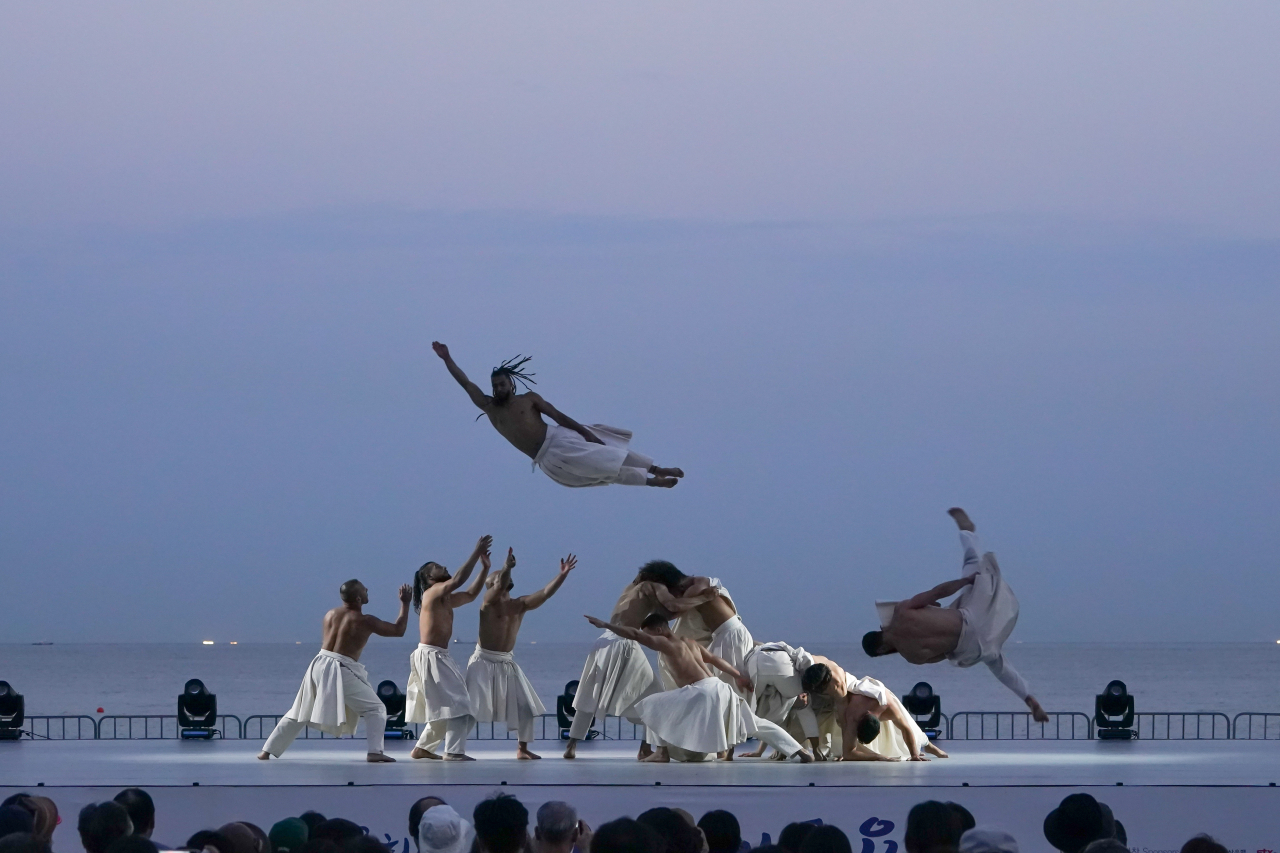
Whether as innocent as a young child moving to her favorite Disney tune or as highly choreographed and tightly executed as the moves of a K-pop band, dancing is an elemental expression of the self and a universal form of communication.
At the Busan International Dance Festival, which took place from June 2-4 in the southern port city, 40 dance teams from around the world communicated pure joy, whimsical caprice, despair and hope, human struggles and victory.
Watching the dancers perform on an outdoor stage next to the sea is an experience that is unique to the BIDF. While the dancers are challenged by exposure to the elements, the audiences, freed from the confines of a formal theater, feel heightened emotions and respond more openly.
 |
Compagnie Herve Koubi performs "What the Day Owes to the Night" at the Haeundae Beach Special Stage on June 4, the last day of the Busan International Dance Festival. (BIDF) |
On Saturday, I watched dancers perform in the afternoon heat as the scorching sun bore down on their glistening backs. As the sun set over the horizon and dusk fell, the performances took on an entirely different hue. When the last performance ended, the audience marveled as the full moon shone brightly above.
For nearly five hours that day, the audience, including those who came and went after catching a performance or two, experienced a whole gamut of emotions. The joy expressed by the MassKara Festival Dance Group from Bacolod City in the Philippines, never mind their colorful costumes and headgear weighing more than 5 kilograms, was infectious.
The heart-thumping beat of the music and the non-stop dancing had people clapping and moving in their seats. No one in the audience could have known that the festival had its roots in a tragedy: When more than a 100 people died or went missing in a ferry accident in 1980, the people sought to overcome the tragedy with a festival. That festival is a testament to humankind's resilience and a triumph of the human spirit.
Then there was the highly entertaining, whimsical spoof on classical ballet by the Ambiguous Dance Company, which had people in stitches. The woman seated next to me laughed so hard she had tears in her eyes. “Oh my, oh my goodness!” she yelled, clapping her hands as the dancers struck the most absurd poses of half-completed ballet positions. This is a kind of response one cannot imagine coming from the plush velvet seats of a theater.
“Ghost” by Danse Tentacle Tribe, a street dance crew from Canada, not only spoke with their gravity defying moves, they said, “When you are confronted with a ghost, walk straight into it and it will disappear.” How wonderfully empowering those words were!
Watching Company Coree’Graphie from France perform, you didn't need to know the title of the piece -- “The Cry of Silence” -- to be struck by indescribable loneliness and sadness. The dancers holding on to each other, not letting the other go, huddling up in an embrace brought inexplicable tears to my eyes. I felt humanity in those few minutes and I saw hope.
After nearly three years of despair in the face of the pandemic, such hope and comfort was much needed, even though I had not realized it at the time.
The 19th Busan International Dance Festival saw the Asian premiere of “What the Day Owes to the Night” by the highly acclaimed Compagnie Herve Koubi from France.
It is a brutal exercise, pushing the human body to its limits. For all its jumping into the air, running and rolling about the stage and spinning on heads, the piece had a simple message. “Through the movements of the dancers, I wanted to show that we are one,” said Koubi.
Kim Hoo-ran is the culture desk editor at The Korea Herald. -- Ed.






![[Today’s K-pop] Blackpink’s Jennie, Lisa invited to Coachella as solo acts](http://res.heraldm.com/phpwas/restmb_idxmake.php?idx=644&simg=/content/image/2024/11/21/20241121050099_0.jpg)
